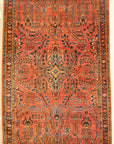
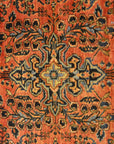
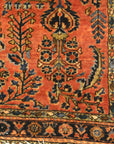
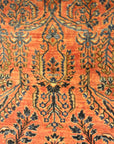
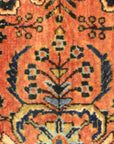
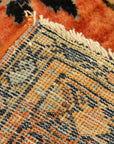
Antique Sarouk Rug 35227
The Antique Sarouk Rug – 4'2" x 6'7" is known for its luxurious thick pile, making it highly durable and perfect for areas with heavy foot traffic such as hallways, foyers, and common rooms. Its quality, style, and resilience have made Sarouk rugs a favorite among Western consumers for decades. Originating in the early 1900s, vibrant over-dyed Sarouks in garnet and salmon-pink hues introduced a fresh and bold look that propelled regional rugs to new heights of popularity.
While some purists may prefer traditional colors, these painted Sarouks have become iconic symbols of the region’s weaving heritage. The 4'2" x 6'7" Antique Sarouk Rug blends timeless craftsmanship with practical durability, making it a beautiful and functional addition to any home.






